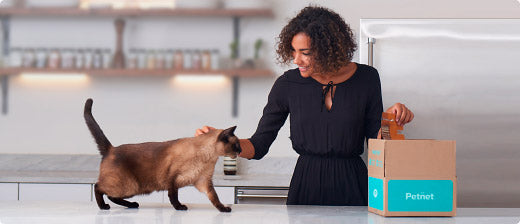This week in our series on Getting to Know Your Cat Breed we are featuring the Exotic Cat. The Exotic has taken the honor of being the most popular cat for four years in a row according to the Cat Fancier’s Association. Exotics are identical to Persians but with short, fluffy coat that gives them a soft, rounded, teddy bear look.
Life expectancy: Exotic’s lifespan it typically 8-15 years.
Size: They are a medium sized cat, weighing between 7 – 12 pounds.
Color: The Exotic’s look very much like Persians but are bred to have short dense fur. They can be found in many colors and patterns, including tabby, tortoiseshell, black and white, and chinchilla silver.
Origins: The Exotic has an interesting origin story. Initial breeders in the US bred their American Shorthairs to Persians to get the silver coloring and green eyes. They liked the look of these crossbreeds so much they added Burmese and Russian Blues to get the gene for shorthair. These cats were in turn bred back to Persians and formed the basis for this new breed, the Exotic or Exotic Shorthair.
Personality: The Exotic is a calm and easy-going breed that is not fazed by much. They get along with children and are respectful of dogs. They are very affectionate and will politely ask for a scratch or pet with their soulful eyes. They are family pets and love to follow family members around, patiently waiting for attention. It’s been said that male Exotics are more affectionate than females who can be somewhat aloof. Overall, Exotics are the quintessential lap cat.
Health Issues: Exotics are susceptible to several potential health problems. Many of these are related to their flat facial structure which may cause breathing difficulty or noisy breathing caused by constricted nostrils. They may also have alignment issue with their teeth and excessive tearing or other eye conditions. In addition, Exotics are genetically predisposed to Polycystic kidney disease. This is a hereditary condition which causes enlarged kidneys and kidney dysfunction. This can be diagnosed at an early age and treated. Responsible breeders screen for it and breed it out of their programs.
Their flat faces and short noses limit their ability to cool themselves and so they are quite susceptible to heat. Their thick double-coated fur also makes staying cool difficult. Make sure they have a cool place to lay when the weather is warm.
Fitness/energy level: Exotics aren’t just pretty. They can be active and really enjoy playing with toys or with anything really. They are also smart and trainable, so find some challenging treat toys or try and teach them to high-five.
Native foods for the Exotic Cat:
- Rabbit
- Deer
- Salmon
- Pomegranate
Good foods to feed your Exotic Cat:
Fromm, Hasenduckenpfeffer
Fussie Cat, Salmon & Chicken
Blue Buffalo, Healthy Aging Chicken & Brown Rice Mature
Fun facts about the Exotic Cat:
- Exotics are a new breed of cat and have only been recognized for about 50 years.
- The cartoon character Garfield is thought to be an Exotic based on his looks.
- Exotic’s are known as the “Lazy man’s Persian” due to their look and easy to care for shorthair.
Sources:
http://cattime.com/cat-breeds/exotic-cats#/slide/1
http://cfa.org/Breeds/BreedsCJ/Exotic.aspx
http://www.vetstreet.com/cats/exotic-shorthair
https://kittentoob.com/cat-breeds/20-things-didnt-know-exotic-shorthair/



 General
General
 General
General
 General
General
